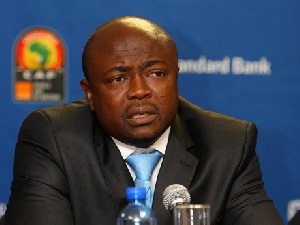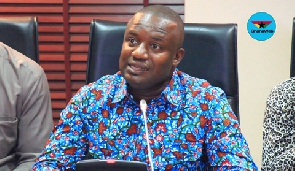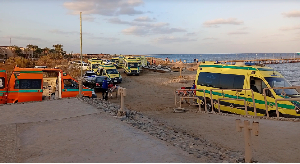Accra, Sept. 4, GNA The International Monetary Fund (IMF) on Monday said Ghana, at its current development pace, could achieve the Millennium Development Goals (MDG) of halving poverty in 2012 ahead of 2015 deadline.
Briefing the media in Accra after a Staff Mission to Ghana, Mr. Sam Itam, Senior Advisor in the African Department of the IMF, said even though the situation might not be true for most African countries, Ghana's economic performance over the last few years has been very satisfactory with real GDP growth increasing from 3.7 per cent in 2000 to 5.9 per cent in 2005. Mr. Itam noted that the situation had led to a more than doubling of the growth of real GDP per capita from 1.2 per cent in 2000 to 3.2 per cent in 2005.
The delegation held discussions on the Sixth and final review under the Poverty Reduction and Growth Facility (PRGF) arrangement with the IMF with President John Agyekum Kufuor, Minister of Finance and Economic Planning, Mr Kwadwo Baah-Wiredu, the Governor of the Bank of Ghana, Dr. Paul Acquah, Ghana Economic Management Team.
Ghana has a three-year PRGF arrangement with the IMF to support Ghana's poverty reduction strategy approved in May 2003 for 274.20 million dollars. This was later extended until October 31, 2006. In the last few years, economic activity has broadened and while agriculture continues to be a key sector, manufacturing and construction are emerging as important contributors to overall growth.
Mr Itam said even though the process of disinflation had not been smooth, 12-month inflation declined from 40.5 per cent in 2000 to 14.8 per cent in 2005. Inflation has been well contained more recently, apart from the impact of oil price increases in the context of high world crude prices and the recent adoption of a full-cost pass-through regime. The inflation figure declined to a single digit levels in March- April 2006 for the first time in more than 20 years. Mr. Itam described policy implementation that has underpinned the good economic performance throughout the programme period of 2003-2006 as satisfactory. Overall deficit has reduced from 6.7 per cent of GDP in 2003 to 3.0 per cent of GDP in 2005. Total public debt declined substantially as a result of both fiscal prudence and debt relief under the HIPC Initiative and the Multilateral Debt Relief Initiative went down from about 24 per cent of GDP in 2000 to 11 per cent of GDP in 2005. Mr Itam said he was happy that government was able to maintain fiscal consolidation resulting in a significant reduction in domestic debt service. There was a sharp drop in interest rates while poverty-related spending increased from 4.7 per cent of GDP in 2001 to 8.5 per cent in 2005. On Ghana weaning itself off the IMF, Mr Itam said the question was not weaning off but rather a new step of moving into a higher level of dialogue with the Fund.
He said countries joined the IMF at their own choice, but they must make sure that they benefited fully from the facilities it offers.
"The question should be how to make a movement to a new level of relationship."
In their assessing the performance under the PRGF-supported programme, Mr Itam said, the mission found that implementation was satisfactory through to the end of June 2006, with all but one of the quantitative performance criteria being met.
The ceiling on the net domestic assets of the Bank of Ghana for the end of June 2006 was exceeded for technical reasons. The IMF mission would therefore support the government's request for a waiver. The Mission also found that there had been progress in implementing structural reforms with the structural performance target being observed.
"Accordingly, the mission will recommend to the IMF management that the7th instalment under the PRGF arrangement of 17.7 million dollars be disbursed as scheduled in October 2006."
Mr Itam urged Ghana to accelerate its economic growth pattern to 8.5 per cent per year over the medium term in order to put the country on a steady path toward achieving middle-income status.
He said government required a substantial increase in investment to attain the higher growth path for achieving the targets of the poverty reduction strategy and the MDGs.
















